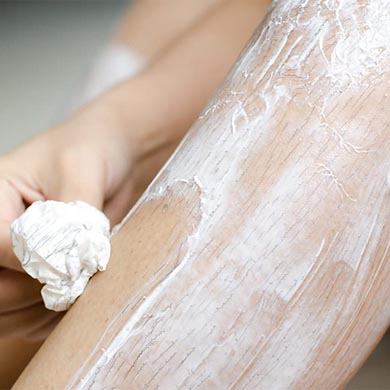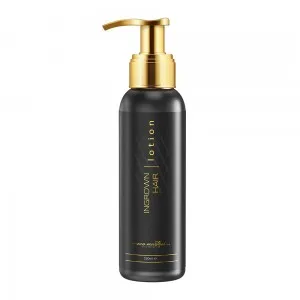Infections
One of the main issues that could occur if you simply ignore the ingrown hairs or razor bumps is an infection. This can especially happen if you try to squeeze the bump or remove the hair yourself. An ingrown hair infection can lead to the bump looking a lot worse and can cause redness, irritation and even pain and discomfort.
Cysts
An ingrown hair cyst appears as a pimple-like bump with hair at its surface and can appear red in colour. If you ignore an ingrown hair cyst, it can get bigger and bigger and become more and more painful to touch. A serious cyst can even lead to a visit to the doctor for treatment.
Pigmentation Marks
For many of us, once the bump of the ingrown hair eventually heals, it can leave behind a brown sport or mark on the skin. This pigmentation can be an issue for many of us, especially depending on where it is, so it’s best not to ignore the ingrown hair to reduce the risk of this happening.
Tips For Dealing With Ingrown Hairs
Whilst ingrown hairs or razor bumps can be itchy and uncomfortable, it's best to deal with them properly instead of trying to tweezer them out one by one. To help you get rid of ingrown hair, here are some of the most suitable treatments and tips to try out at home:
-
Try A Topical Treatment
To help get rid of any ingrown hairs, why not try a topical treatment to help? Use a natural ingrown hair lotion to help exfoliate the area as well as soften and moisturise deep down.
Some of the best recommended exfoliating ingredients for this include glycolic acid, benzoic acid and salicylic acid. A good ingrown hair cream can also help to promote hair growth in the right direction.
-
Use A Warm Compress
Ingrown hairs begin as painful hard bumps but as they begin to heal they become softer and redder until the hair becomes visible. If you apply a warm (not hot) compress to the area, it helps to promote circulation to speed up the healing process. It can also help to soothe irritation and redness and make it less itchy.
-
Stop Shaving
Many people believe that it's best to continue shaving if you spot ingrown hairs, but that was probably the cause in the first place so will only make it worse! Give your skin a break for a while if you can and if you can’t, try other methods that can cause less friction such as waxing or laser hair removal. Just remember to wait until the ingrown hairs have gone before you begin shaving the same area again.
How To Prevent Ingrown Hairs
-
Be Careful With Hair Removal Methods
The biggest cause of ingrown hairs is shaving, which is why they're commonly referred to as razor bumps. If you want to reduce the amount of ingrown hairs, take more caution when shaving.
Try exfoliating the skin first and using a shaving foam, gel or cream with added moisturisers to reduce friction. You should also shave in the direction of hair growth and avoid shaving over the same area multiple times.
-
Shave Less Frequently
Shaving too much can cause a lot of friction and irritation to your skin and can make ingrown hairs a lot more common. To help prevent them, you can try to reduce the amount you shave. This may not be possible for everyone and especially in summer when more skin is on show, but you can try different methods of hair removal or avoid having a close shave every time.
-
Try Laser Hair removal
In order to avoid ingrown hairs all together, you need to get rid of the hair follicle completely. The best way to do this is through laser hair removal. You can do this at both a beauty parlour or at home with a laser hair removal device. Whilst this is a more expensive option at first, it's an investment in the future as not only will it mean you won’t have to deal with ingrown hairs any more, but you also won’t have to keep shaving all the time!
-
Exfoliate
If you’re wondering how to prevent ingrown hair on legs as well as the rest of the body, a great step in the right direction is to exfoliate the skin regularly, especially before hair removal.
Exfoliating helps to clean out the pores and remove excess oil and dirt. It also helps to buff away dead skin cells that can be clogging up the skin. For ingrown hairs, this is useful as it helps to keep the area around the follicles clean and can help the hair to grow upwards instead of back in on itself.
-
Moisturise
After hair removal of any kind, you should be moisturising the skin. This helps to keep it nourished and healthy as well as soft so that you’re less likely to have ingrown hairs. You should also moisturise your skin after bathing to keep it hydrated. Many moisturisers also have other benefits for the skin such as providing nutrients so it’s a win-win!
Overview
Ingrown hairs can be annoying, itchy and uncomfortable, but you should now know some of the most ideal and easiest ways to deal with them. Make sure you don’t just ignore your ingrown hairs and once you’ve got rid of them with our tips, use a natural ingrown hair treatment and do what you can to prevent them coming back!



